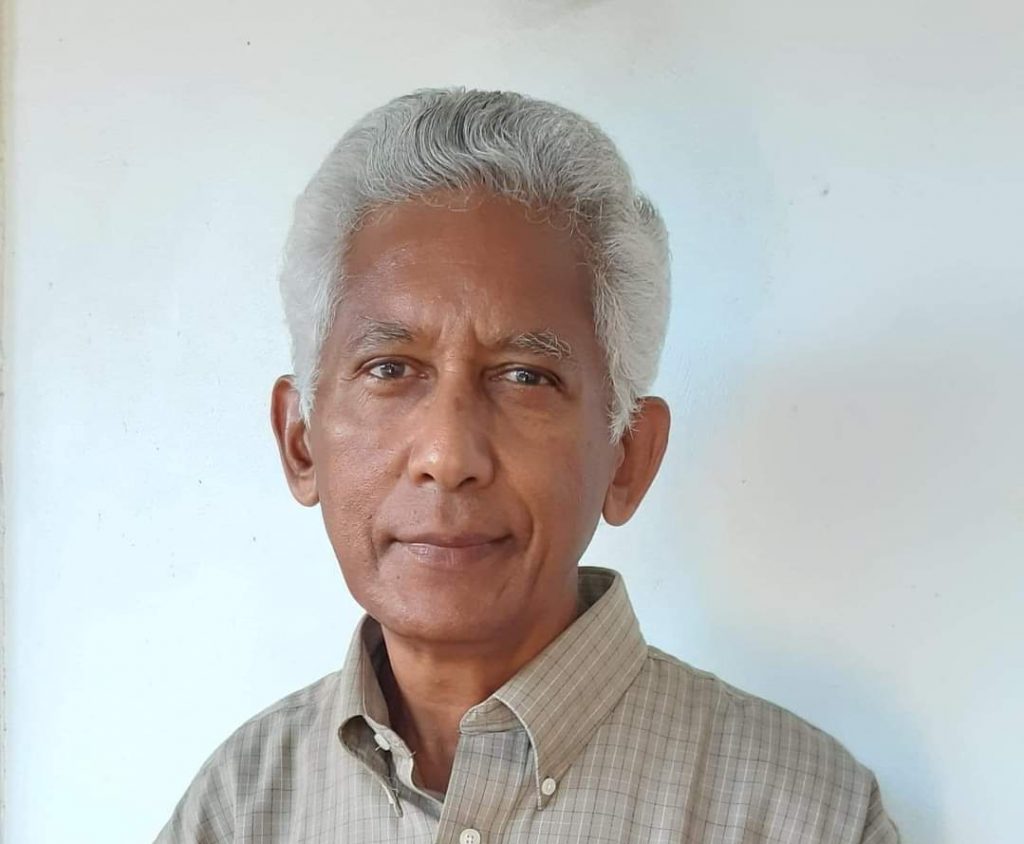Dear Editor,
The rich legacy of Hindu culture is perfected, preached and propagated in the way of life as practiced not only by those following the tradition from birth, but also, by those who align themselves with the customs and teachings which have evolved from the ancient days of the rishis, munis, saints, sages and sadhus, to the modern days of yogis, swamis, gurus, pandits and devotees. With over a billion followers scattered throughout the world, it is regarded as the third largest religion and the oldest, being over five thousand years old. Its religious texts are scribed in the “mother of all languages,” Sanskrit, which influenced other languages like Latin and Greek, and have survived the sands of time.
There are numerous events and occasions to commemorate Hindu systemic observances which bear religious and cultural significance, attesting to the historical and sociological habits of ancestral upbringing. Apart from the popular Holi, Diwali and the various manifested anniversaries, emphasis is also placed on rituals depicting respect, regards and reverence, the auspiciousness of Rakhi being an example. Another pertinent and prime precedence is the conventional ceremony of Guru Purnima which will be realized on July 21st, a Full Moon, also called Buck or Thunder Moon. It is celebrated not only in India, but also Nepal, Thailand, Sri Lanka, Malaysia and other places where Indian descendants reside, including Europe, the Americas, the Caribbean and Guyana.
The much-embraced Hindu festival, Guru Purnima, is celebrated to honour the relationship between teachers and disciples. On this day, the students or disciples (chailas), worship their teachers, guides, gurus and mentors. They thank and pay homage and gratitude to their Gurus for guiding them through their childhood and formative years, and for carrying them to open their minds to see the light of knowledge. Guru Purnima is also known as Vyasa Purnima and is observed as the birth anniversary of Veda Vyasa, a great sage and author of the Mahabharata. This festival is also celebrated as Gyaan Purnima owing to its association with knowledge and teachings.
Guru Purnima is celebrated not only by Hindus but also Jains, Sikhs and Buddhists. Lord Shiva is considered as the first Guru (Adi Guru) and the Jains symbolize it as “Treenok Guru Purnima, the day when Lord Shiva transmitted the knowledge of Yoga to the Saptarishis. The Sikhs demarcate this day to pay obeisance to their Ten Spiritual Gurus. The Buddhists consider this day as Buddha Purnima, the day Buddha gained enlightenment and delivered his first sermon at Sarnath. Gur means darkness and Ru means that which is opposite to darkness. So, Guru is one who drive out fear and ignorance and replace the darkness with light. Paramhansa Ramakrishna opinioned, “He alone is the genuine teacher who is illumined by the light of true knowledge.”
The Guru/Shishya relationship shares a rich, cultural and friendly history which reflects a unison not only family oriented but above that, a student and tutor companionship, tailoring a fine legacy of sound religious teachings, deep philosophical discussions, articulated conversations on unlimited topics and enjoying the company of a very insightful personality who may always give sound advice and positive guidance. All these events and opportunities go beyond academic instruction and may afford a realization of spiritual awakening and provide the knowledge which can mold a person to be knowledgeable, honest, sincere and humane, capable of facing all worldly challenges on this competitive planet.
The Guru acts as a role model and transmits knowledge to the student which molds the person to face the world. The student is expected to trust and surrender oneself while respecting and serving the teacher. A student may cordially challenge the teacher as Buddha questioned his Guru about ascetics’ practices; the 15th Century poet, Kabir, inquired about societal norms and Swami Vivekananda queried rituals. The Guru-Shishya custom (parampara), knits a spiritual passage. Reference can be made to Lord Krishna and Arjuna in the Mahabharata, Shri Ram and Hanuman ji in the Ramayana and Lord Shankaracharya and Vasishta.
According to the Vedas, the Hindu life is structurally ordained into four phases (Asramas), each stage affording the individual to transit into specific aspirations. With the expectation of surviving for one hundred years, the first hurdle is the student (Brahmacharya) asrama, the second block is the householder (Grihastha) asrama, the third juncture is the forest/dweller walker; hermit; social worker (Vanaprastha) asrama and the final leg is the renunciation (Sannyasa) asrama. The life cycle induces the products of education, growth, maturity and decline, to complete the birth and death concept.
In the modern world which is materialistically entrenched, this cultural and social mosaic may not be practically nuanced for most, and, the reality of aspiring with different goals and objectives to satisfy one’s lifestyle, fundamentally satiates a variable pathway in this technological era and peer persuasions, which influences a division, diversifying scriptural prescriptions from societal perceptions.
There is need to remember that a successful Guru-Shishya pair embodies sincerity, unwavering dedication, and mutual respect. The Guru-Shishya relationship now incorporates bridging customs and tradition with modern practices and ways. Navigating these challenges requires dedication, innovation, and a commitment to student growth. The Guru-Shishya relationship is dynamic, evolving, and deeply sentimental, if not personal. This relationship may blossom into a lifetime fruition. On this Guru Purnima, not only Hindus but all may reach out to your teacher and express your appreciation.
Om Om Om, gurur Brahma, gurur Vishnur, gurur Devo, Maheshvarah, guruh saksat param Brahma, tasmai sri gurave namah.
To that Guru who is Brahma, the Creator, Vishu, the Maintainer, and Siva, the Disslover. To that Guru who is the direct experience of Brahman, salutations to that great Guru.
Yours respectfully,
Jai Lall.
